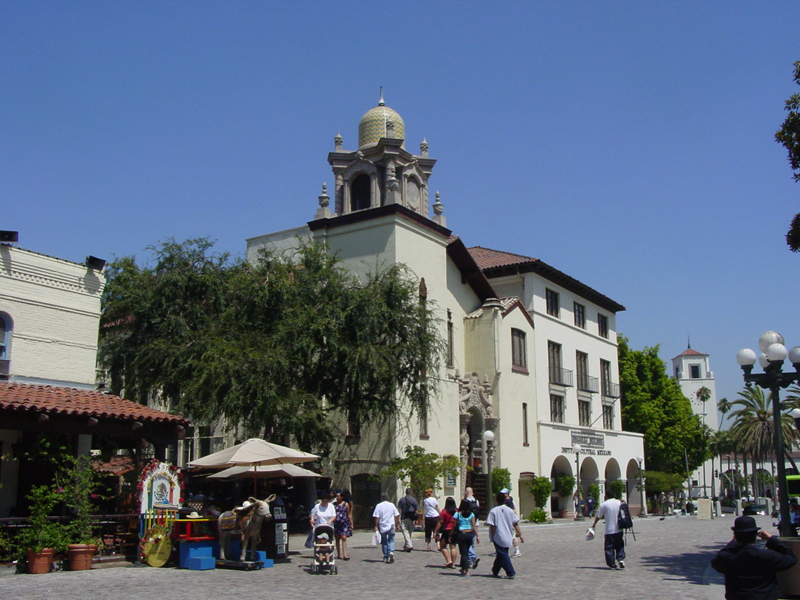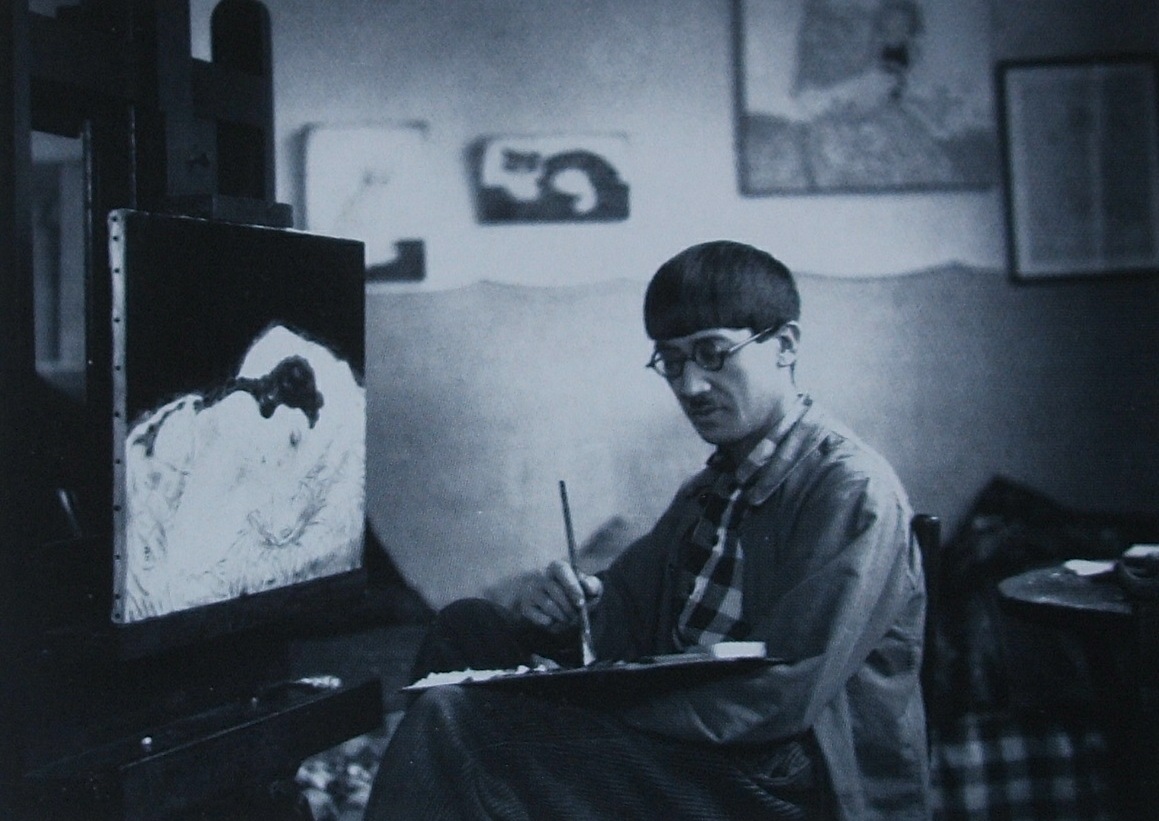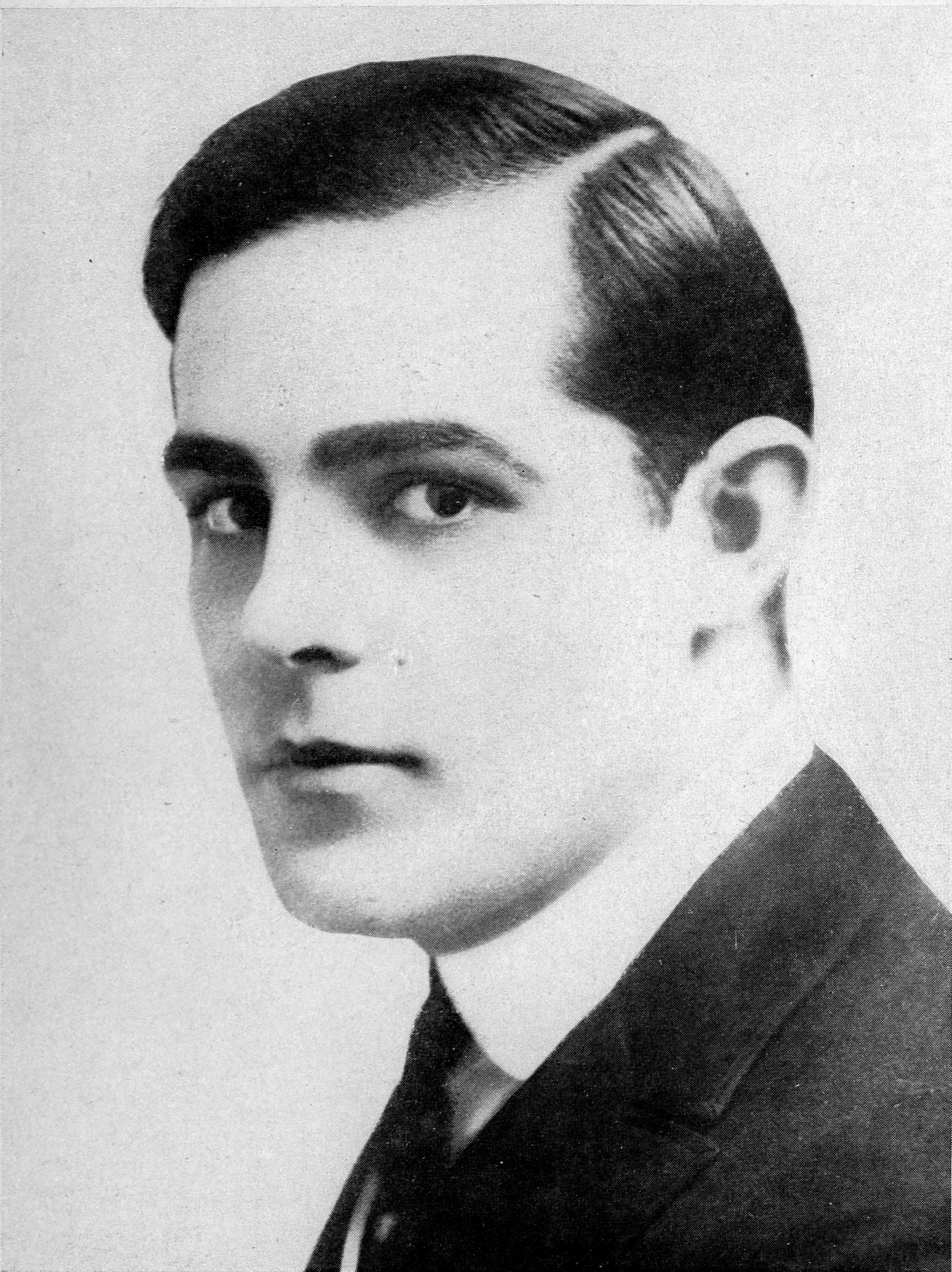|
Gilberto Martínez Solares
Mario Gilberto Agustin Martinez Solares (January 19, 1906 – January 18, 1997) was a Mexican director, cinematographer, screenwriter, and actor who is considered one of the most prolific filmmakers in Mexican cinema having directed more than 160 films, most of them written by him during the Golden Age of Mexican cinema. He is also recognized as the most important comedy director in Mexico. Life and career Gilberto Martínez Solares was born on January 19, 1906, in Mexico City. His father, Gilberto Martínez Medina, was an accountant that worked for the Madero government. In 1910, the Mexican Revolution broke out, and, as a result of the expanding violent environment in Mexico City, the Martínez-Solares family moved near Pénjamo, Guanajuato to the Hacienda de la Calle in 1913. Upon the family's return to Mexico City, Gilberto Martínez attended the Fray Bartolomé de las Casas primary school, where he shared the classroom and the hours of play with two future colleagues; ... [...More Info...] [...Related Items...] OR: [Wikipedia] [Google] [Baidu] |
Mexico City
Mexico City ( es, link=no, Ciudad de México, ; abbr.: CDMX; Nahuatl: ''Altepetl Mexico'') is the capital and largest city of Mexico, and the most populous city in North America. One of the world's alpha cities, it is located in the Valley of Mexico within the high Mexican central plateau, at an altitude of . The city has 16 boroughs or ''demarcaciones territoriales'', which are in turn divided into neighborhoods or ''colonias''. The 2020 population for the city proper was 9,209,944, with a land area of . According to the most recent definition agreed upon by the federal and state governments, the population of Greater Mexico City is 21,804,515, which makes it the sixth-largest metropolitan area in the world, the second-largest urban agglomeration in the Western Hemisphere (behind São Paulo, Brazil), and the largest Spanish-speaking city (city proper) in the world. Greater Mexico City has a GDP of $411 billion in 2011, which makes it one of the most productive urb ... [...More Info...] [...Related Items...] OR: [Wikipedia] [Google] [Baidu] |
Los Angeles
Los Angeles ( ; es, Los Ángeles, link=no , ), often referred to by its initials L.A., is the largest city in the state of California and the second most populous city in the United States after New York City, as well as one of the world's most populous megacities. Los Angeles is the commercial, financial, and cultural center of Southern California. With a population of roughly 3.9 million residents within the city limits , Los Angeles is known for its Mediterranean climate, ethnic and cultural diversity, being the home of the Hollywood film industry, and its sprawling metropolitan area. The city of Los Angeles lies in a basin in Southern California adjacent to the Pacific Ocean in the west and extending through the Santa Monica Mountains and north into the San Fernando Valley, with the city bordering the San Gabriel Valley to it's east. It covers about , and is the county seat of Los Angeles County, which is the most populous county in the United States with an ... [...More Info...] [...Related Items...] OR: [Wikipedia] [Google] [Baidu] |
Santa (1932 Film)
''Santa'' (1932) is the first Mexican narrative sound film. It was directed by Antonio Moreno and starred Lupita Tovar, based on the novel of the same name by Federico Gamboa. It had its world premiere in San Antonio. In 1994, the Mexican magazine Somos published their list of "The 100 best movies of the cinema of Mexico" in its 100th edition and named Santa its 67th choice. Plot A Mexican girl named Santa (Tovar) is seduced and abandoned by a soldier, Marcelino. Rejected by her family and friends, she finds shelter in a brothel in Mexico City. After meeting Santa, the blind piano player Hipólito (Orellana) falls in love with her but is ridiculed by those around him. After she is rejected by her romantic partner Jarameno (due to the meddling of a suddenly returned Marcelino), Hipólito invites Santa to live with him and they attend church together. Later Santa becomes ill and Hipólito goes to the hospital to be with her but she passes away. Cast * Lupita Tovar as Santa * ... [...More Info...] [...Related Items...] OR: [Wikipedia] [Google] [Baidu] |
Tsuguharu Foujita
was a Japanese–French painter and printmaker born in Tokyo, Japan, who applied Japanese ink techniques to Western style paintings. At the height of his fame in Paris, during the 1920s, he was known for his portraits of nudes using an opalescent white ink with fine black outlines and his pictures of cats. He returned to Japan in 1933, and served as a war artist for the Imperial Japan during World War II. After the war, Foujita returned to France, where he became a French citizen and converted to Christianity. He was buried in The Chapel of our Lady of Peace, which he had helped build and is painted with his frescoes. Since his death, Foujita's work has become increasingly appreciated in Japan. Early life in Japan Foujita was born in 1886 in , a former ward of Tokyo that is now part of the . He was the son of , an Army Medical Director. Immediately after graduating secondary school, Foujita wished to study in France. But Foujita's father consulted with his colleague, the Ja ... [...More Info...] [...Related Items...] OR: [Wikipedia] [Google] [Baidu] |
Pablo Picasso
Pablo Ruiz Picasso (25 October 1881 – 8 April 1973) was a Spanish painter, sculptor, printmaker, ceramicist and theatre designer who spent most of his adult life in France. One of the most influential artists of the 20th century, he is known for co-founding the Cubist movement, the invention of constructed sculpture, the co-invention of collage, and for the wide variety of styles that he helped develop and explore. Among his most famous works are the proto-Cubist '' Les Demoiselles d'Avignon'' (1907), and the anti-war painting '' Guernica'' (1937), a dramatic portrayal of the bombing of Guernica by German and Italian air forces during the Spanish Civil War. Picasso demonstrated extraordinary artistic talent in his early years, painting in a naturalistic manner through his childhood and adolescence. During the first decade of the 20th century, his style changed as he experimented with different theories, techniques, and ideas. After 1906, the Fauvist work of the sli ... [...More Info...] [...Related Items...] OR: [Wikipedia] [Google] [Baidu] |
Paris
Paris () is the capital and most populous city of France, with an estimated population of 2,165,423 residents in 2019 in an area of more than 105 km² (41 sq mi), making it the 30th most densely populated city in the world in 2020. Since the 17th century, Paris has been one of the world's major centres of finance, diplomacy, commerce, fashion, gastronomy, and science. For its leading role in the arts and sciences, as well as its very early system of street lighting, in the 19th century it became known as "the City of Light". Like London, prior to the Second World War, it was also sometimes called the capital of the world. The City of Paris is the centre of the Île-de-France region, or Paris Region, with an estimated population of 12,262,544 in 2019, or about 19% of the population of France, making the region France's primate city. The Paris Region had a GDP of €739 billion ($743 billion) in 2019, which is the highest in Europe. According to the Economis ... [...More Info...] [...Related Items...] OR: [Wikipedia] [Google] [Baidu] |
Mexican Institute For Child Protection
Mexican may refer to: Mexico and its culture *Being related to, from, or connected to the country of Mexico, in North America ** People *** Mexicans, inhabitants of the country Mexico and their descendants *** Mexica, ancient indigenous people of the Valley of Mexico ** Being related to the State of Mexico, one of the 32 federal entities of Mexico ** Culture of Mexico *** Mexican cuisine *** historical synonym of Nahuatl, language of the Nahua people (including the Mexica) Arts and entertainment * "The Mexican" (short story), by Jack London * "The Mexican" (song), by the band Babe Ruth * Regional Mexican, a Latin music radio format Films * ''The Mexican'' (1918 film), a German silent film * ''The Mexican'' (1955 film), a Soviet film by Vladimir Kaplunovsky based on the Jack London story, starring Georgy Vitsin * ''The Mexican'', a 2001 American comedy film directed by Gore Verbinski, starring Brad Pitt and Julia Roberts Other uses * USS ''Mexican'' (ID-1655), United Stat ... [...More Info...] [...Related Items...] OR: [Wikipedia] [Google] [Baidu] |
María Luisa Garza
María Luisa Garza Garza (August 25, 1887, Cadereyta Jiménez – 1980) was a Mexican journalist and novelist, who wrote under the pen name "Loreley".Juanita Luna Lawhn''María Luisa Garza''in ''Double Crossings'', 2001, pp. 83-86. Biography Garza was the daughter of Francisco Garza González and Petra Garza Quintanilla.Rubén Ariel Núñez Charles''María Luisa Garza Garza ‘Loreley’''(Spanish), January 2008. She was married to the physician and writer Adolfo Cantú Jáuregui. They had four children. Her son Federico was a notable artist. Her daughter Diana was married to the photographer, scriptwriter, director and producer Gilberto Martínez Solares. During the Mexican Revolution Garza moved to Texas, where she lived in San Antonio, and wrote for the papers ''La Pensa'', ''La Época'' and ''El Imparcial de Texas'' in the 1920s. She also founded the journal ''Alma Femenina'' and was involved in the literary movement of the ''Generation of El México Afuera''. She was al ... [...More Info...] [...Related Items...] OR: [Wikipedia] [Google] [Baidu] |
Alex Phillips (cinematographer)
Alexander Pelepiock (January 11, 1900 – June 14, 1977) was a Canadian-born Mexican cinematographer known for working in over 200 films, most of them during the Golden Age of Mexican cinema. His most well-known works include '' The Other One'' (1946), '' Desired'' (1951), '' En La Palma de Tu Mano'' (1952), and '' Untouched'' (1955). Throughout his career, he was nominated fourteen times for an Ariel Award for Best Cinematography which he won twice for '' En La Palma de Tu Mano'' and '' Untouched''. In 1973, Phillips was recognized with a Golden Ariel from the Mexican Academy of Cinematographic Arts and Sciences for his excellence and contributions to the Mexican film industry. He died on June 14, 1977, at the age of 76, due to CVST. Early life Phillips was born in Renfrew, Ontario. In his youth, his family moved to Russia, but he returned to Canada because of his dislike with the czarist government. He enlisted in the Canadian Army where he met Mary Pickford who i ... [...More Info...] [...Related Items...] OR: [Wikipedia] [Google] [Baidu] |
Antonio Moreno
Antonio Garrido Monteagudo (September 26, 1887 – February 15, 1967), better known as Antonio Moreno or Tony Moreno, was a Spanish-born American actor and film director of the silent film era and through the 1950s. Early life and silent films Born in Madrid, Spain, Moreno emigrated to New York in 1901 and settled in Massachusetts, where he completed his education. Although he claimed to have attended Williston Seminary in Easthampton, Massachusetts, the Archives of the school, now the Williston Northampton School, have no record of his having done so. He became a stage actor in regional theater productions. In 1912, he moved to Hollywood, California, where he was signed to Biograph Studios, and began his career in bit parts. His film debut was in ''Iola's Promise'' (1912). In 1914, Moreno began co-starring in a series of highly successful serials at Vitagraph opposite popular silent film actress Norma Talmadge. These appearances increased Moreno's popularity with nas ... [...More Info...] [...Related Items...] OR: [Wikipedia] [Google] [Baidu] |
Chano Urueta
Santiago Eduardo Urueta Sierra (24 February 1904 – 23 March 1979), more commonly known as Chano Urueta, was a Mexican film director, producer, screenwriter, and actor. Filmography Director *1928: ''El Destino (1928 film), El Destino'' *1933: ''Profanación (1933 film), Profanación'' *1934: ''The Scandal (1934 film), The Scandal'' *1934: ''Enemigos (film), Enemigos'' *1934: ''Una Mujer en venta'' *1935: ''Clemencia (film), Clemencia'' *1936: ''Sistemas de riego en Ciudad Delicias, Chihuahua y en Ciudad Anáhuac, Nuevo León'' *1937: ''Jalisco nunca pierde'' *1938: ''Canción del alma'' *1938: ''Hombres de mar'' *1938: ''María (1938 film), María'' *1938: ''Mi candidato'' *1939: ''El Signo de la muerte'' *1939: ''The Night of the Mayas'' *1940: ''¡Que viene mi marido!'' *1940: ''Los de abajo (film), Los de abajo'' *1941: ''La Liga de las canciones'' *1942: ''The Count of Monte Cristo (1942 film), The Count of Monte Cristo'' *1943: ''Ave sin nido'' *1943: ''El Misterioso señor ... [...More Info...] [...Related Items...] OR: [Wikipedia] [Google] [Baidu] |
Emilio Fernández
Emilio "El Indio" Fernández Romo (; 26 March 1904 – 6 October 1986) was a Mexican film director, actor and screenwriter. He was one of the most prolific film directors of the Golden Age of Mexican cinema in the 1940s and 1950s. He is best known for his work as director of the film ''María Candelaria'' (1944), which won the Palme d'Or award at the 1946 Cannes Film Festival. As an actor, he worked in numerous film productions in Mexico and in Hollywood. Early life Born in Sabinas, Coahuila, on 26 March 1904, Emilio Fernández Romo was the son of a revolutionary general, while his mother was a descendant of Kickapoo Indians. He was the father of the Mexican actor Jaime Fernández. From his parents he inherited a deep feeling and love for his country, as well as its customs and indigenous beliefs, that led him to build his personality as a man of impetuous character. From his earliest years and throughout his life, he was characterized by a strong personality, brash character ... [...More Info...] [...Related Items...] OR: [Wikipedia] [Google] [Baidu] |






